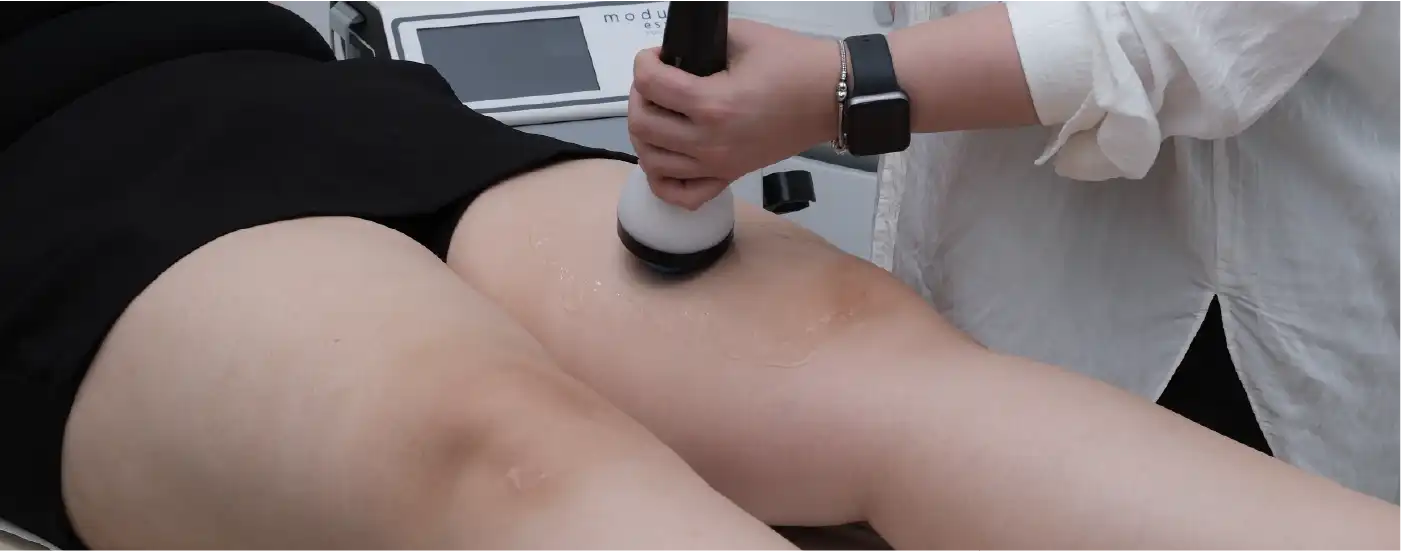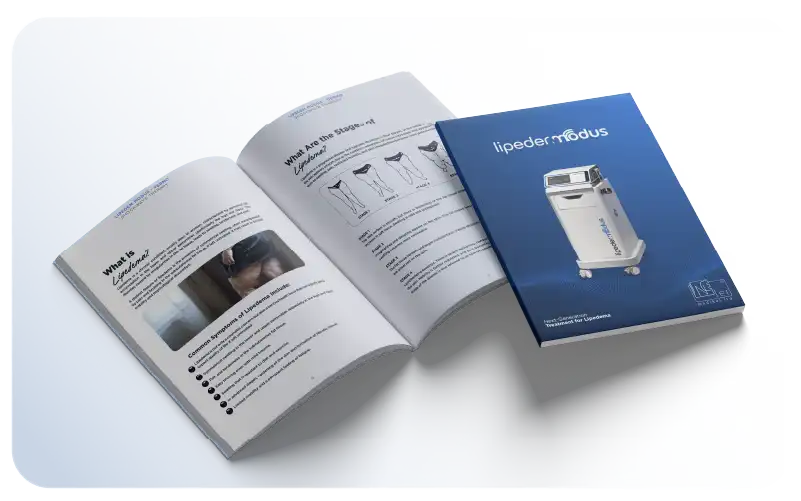Lipedema is a chronic condition, usually seen in women, characterized by an abnormal accumulation of fat in the lower and upper extremities (especially the legs and hips). This disorder causes swelling, tenderness, and pain due to irregularities in the fatty tissue. The most prominent feature of lipedema is the frequent occurrence of pain and bruising in the fatty tissue under the skin, along with symmetrical swelling. If left untreated, it can lead to limited mobility and psychological distress.
Lipedema Symptoms
The most common symptoms of lipedema are:
- Symmetrical swelling in the lower and upper extremities (especially legs and hips).
- Pain and tenderness in the fatty tissue under the skin.
- Easy bruising from minor trauma.
- Swelling that is resistant to diet and exercise.
- In advanced stages, hardening of the skin and formation of fibrotic tissue.
- Limited mobility and a feeling of fatigue.
ESWT Treatment for Lipedema
Extracorporeal Shockwave Therapy (ESWT) is used as an innovative and effective method in lipedema treatment. The shockwaves target the abnormal fatty tissue caused by lipedema, increasing microcirculation, supporting lymphatic drainage, and reducing pain. This method offers a non-invasive treatment option, improving patients' quality of life.
Research shows that ESWT breaks down fatty tissue in lipedema-affected areas, increasing circulation and supporting cellular metabolism. It has also been noted that shockwaves reduce inflammation and increase skin elasticity.
Advantages of ESWT Treatment for Lipedema
- Improves microcirculation, providing better nourishment to subcutaneous tissues.
- Supports lymphatic drainage, reducing swelling and edema.
- Softens hardened septa in fatty tissue, improving the skin's surface.
- Reduces inflammation, relieving pain and tenderness.
- Increases skin elasticity, providing regional firming.
- Being a non-invasive method, it does not require surgical intervention.
- Offers a quick recovery process after treatment and does not interrupt daily activities.
Side Effects of ESWT Treatment for Lipedema
ESWT treatment is generally a safe method and does not cause severe side effects. However, some side effects may occur in some cases:
- Slight redness or tenderness in the treatment area.
- Temporary bruises or superficial hematoma.
- A slight tingling or pain sensation.
These side effects disappear on their own in a short time, and the risk is minimal when the treatment is performed by specialists.
ESWT Treatment Duration and Period
For lipedema treatment, ESWT is generally applied 1-2 times a week, for a total of 6-8 sessions. The treatment duration may vary according to the stage of lipedema, the severity of symptoms, and the patient's needs.
























